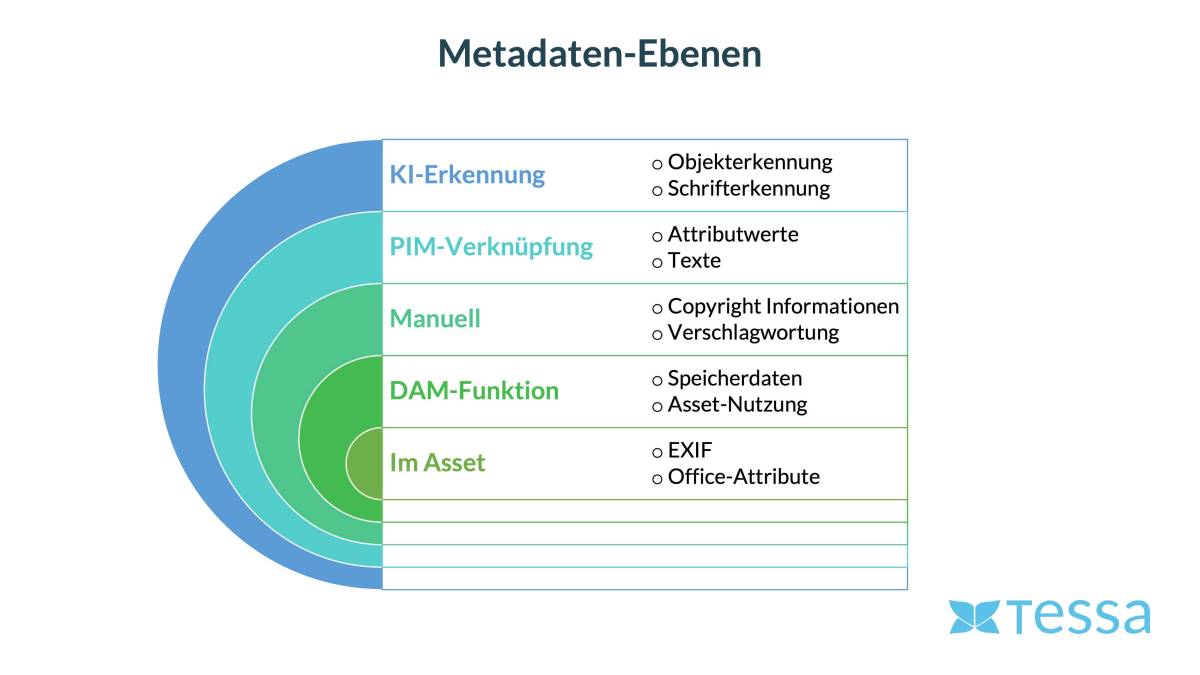What Are Metadata?
Metadata are data about data. The term "meta" comes from the Greek language and means "beyond" in our context. These metadata define the characteristics of a data object. In the case of Digital Asset Management (DAM), this pertains to the properties of an asset, which is a file. Metadata can be:
- Embedded in the file.
- Created through storage in a DAM.
- Manually added.
- Determined by artificial intelligence.
- Obtained through integration with a Product Information Management (PIM) system.
When we think of photos, which were initially stored in image databases, the predecessors of DAM systems, image files contain EXIF (Exchangeable Image File Format) information. These details are integrated into each saved photo by the camera and may include:
- Camera (make and model)
- Aperture
- Exposure time
- ISO
- Creation date
- GPS location data
- Photographer
- Copyright notices
- And many other attributes
Photographers can configure information like the photographer's name and copyright notices using professional cameras to assert their rights to their work.
Modern DAM systems store various file types that also include metadata of this category. PDF files may specify the author, include additional copyright information, and allow password protection. Microsoft Office documents also support metadata. In addition to the standard attributes predefined by the manufacturer, it is possible to define custom attributes and add associated values to these files. There are four types of custom attributes available: text attributes, numerical values, date values, and booleans (yes/no).
Moreover, it is possible to extract, read, or link many other meta-information from files. An example is the application of OCR or advanced text recognition mechanisms to extract text information from photos or scans, making it searchable.
Why Are Metadata Important?
Metadata in asset management serve various functions. Initially, photographers and companies thought about copyright and data protection against unauthorized access, as well as documenting the creation of assets. These crucial foundational functions are supplemented by data that a DAM system can record for individual assets. This includes the usage of assets. Consequently, it allows us to track how often different assets are downloaded and classify their relevance. Data regarding how often an asset can be published and the duration for which the rights are available are usually added manually or semi-manually and also fall under metadata.
An incredibly important function of DAM systems is to make assets discoverable. This is enriched by linking assets with information from the PIM (Product Information Management). For instance, in the fashion industry, it becomes easy to select all action photos of women's pants for the upcoming season using this method.
Furthermore, one should not forget about data generated by artificial intelligence (AI). This enables the recognition of objects in photos or texts within graphics. Specifically, with graphic formats, text can be extracted from them, even if it wasn't originally saved as text.
How Can Metadata Be Edited?
Fundamentally, metadata can be edited using various creation tools. As mentioned earlier, office programs are a prime example. Adobe software also provides the capability to edit metadata. Moreover, DAM systems naturally offer the option to adjust the relevant information, provided it is permissible. For instance, if a file is protected by a password, this might not be straightforward. Additionally, all non-integral metadata components in DAM systems like TESSA DAM can be adjusted automatically or manually. There are also specialized tools available for manipulating integral metadata components.





